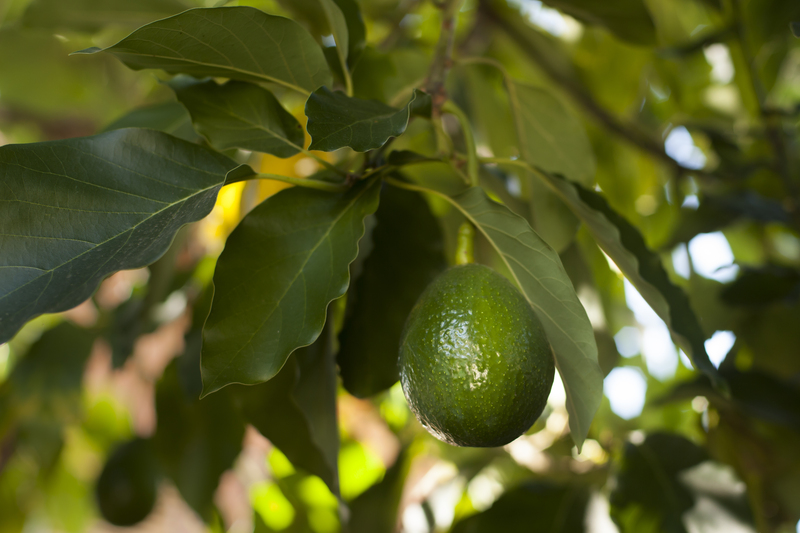Orchid Care 101: From Novice to Expert
Posted on 01/06/2025
Orchid Care 101: From Novice to Expert
Orchids have long captivated plant enthusiasts with their extraordinary beauty, mysterious allure, and remarkable diversity. Whether you're just starting your first orchid or you've already caught the "orchid fever," understanding the essentials of orchid care is key to enjoying vibrant, blooming plants year-round. In this thorough guide, we'll walk you through every critical aspect, from beginner basics to advanced techniques--empowering you to transform from a novice to a true orchid expert!
Understanding the World of Orchids
Before you dive into caring for orchids, it's important to familiarize yourself with these fascinating plants. Orchids are a diverse family, boasting over 25,000 species and countless hybrids. This remarkable variety means there's an orchid for nearly every type of enthusiast and environment.
Common Types of Orchids for Beginners
- Phalaenopsis (Moth Orchid): One of the most popular and easiest orchids for beginners, featuring broad leaves and stunning blooms.
- Cattleya: Known for their exquisite fragrance and flamboyant flowers.
- Dendrobium: Hardy varieties that adapt well to various environments.
- Oncidium (Dancing Lady): Famous for their profuse sprays of small, bright flowers.
Tip: Start with a hardy species like Phalaenopsis to build confidence in your orchid growing skills.

The Fundamentals of Orchid Care
Orchid care may seem challenging at first, but once you understand their primary needs, you'll be well on your way to cultivating healthy, happy plants.
1. Selecting the Right Orchid
- Assess Your Environment: Choose orchid species that match your home's humidity, temperature, and light conditions.
- Check Plant Health: Look for firm, green leaves and unblemished roots before bringing an orchid home.
2. Potting and Repotting Orchids
Orchids typically grow in airy, well-draining mediums, reflecting their native epiphytic habits (growing on trees, not in soil!). Popular choices include bark, sphagnum moss, and perlite. It's essential to repot orchids every 1-2 years to refresh the medium and prevent root rot.
- Choose Proper Pots: Transparent or slatted pots allow air circulation and let you monitor root health.
- Repot Gently: Untangle roots, remove decayed sections, and use fresh medium for optimal growth.
3. Orchid Watering Techniques
One of the most frequent mistakes in orchid care is overwatering. Orchids prefer to dry out between waterings. Their roots need oxygen as much as water--wet roots can spell disaster.
- How Often to Water: Typically once a week, though this varies by season and environment.
- The Soak-and-Dry Method: Water thoroughly, let excess run out, and don't water again until the medium is nearly dry.
- Signs of Trouble: Yellowing leaves or mushy roots may indicate too much water.
Pro Tip: Use room-temperature water and avoid letting the crown (center) of the plant remain wet to prevent rot.
4. Ideal Light for Orchids
Light plays a pivotal role in growing orchids. Too little, and they won't flower; too much, and you risk leaf burn.
- Phalaenopsis: Thrive in bright, indirect sunlight--ideal for east or north-facing windowsills.
- Cattleyas and Dendrobiums: Need more light, even tolerating filtered direct morning sun.
- Assessing Light Levels: Healthy orchids often have light green leaves, while dark green suggests not enough light.
5. Temperature and Humidity Requirements
Orchids hail from diverse habitats, but most common varieties favor intermediate temperatures:
- Day: 65-80?F (18-27?C)
- Night: Slightly cooler, around 60-68?F (15-20?C)
- Humidity: Maintain 40-70%, using trays of pebbles and water or a room humidifier during dry winter months.
Stable temperatures and humidity contribute to consistent flowering cycles.
6. Fertilizing Orchids Properly
Feed orchids with care. Less is often more! Use a balanced, water-soluble orchid fertilizer.
- Frequency: Fertilize lightly every second or third watering during the growing season (spring and summer).
- Type: Look for fertilizers with equal N-P-K ratios or those formulated specifically for orchids.
Remember: Flush pots with plain water monthly to avoid fertilizer salt buildup.
Advanced Orchid Care: Blooming Like an Expert
Mastering the basics of orchid care paves the way for advanced practices that promote vibrant blooms and robust growth year after year.
Orchid Pruning and Deadheading
- Remove Spent Flowers: Snip off faded blooms promptly to redirect energy into new growth.
- Stem Pruning: For Phalaenopsis, trim flower spikes above a node to encourage side spikes and re-blooming.
- Sanitize Tools: Always use sterilized scissors to prevent disease transmission.
Understanding Orchid Bloom Cycles
Each species has unique blooming patterns. Some, like Phalaenopsis, can rebloom several times a year; others, like Cymbidiums, may bloom once annually.
- Key to Re-blooming: Mimic natural temperature drops in the fall to trigger flower spikes.
- Increase Light: During shorter days, provide additional light to stimulate bud production.
Propagation: Creating New Orchid Plants
Take your orchid expertise to the next level by propagating your favorites!
- Division: Most effective for sympodial types (like Cattleya) by splitting mature clusters into separate plants.
- Keiki Growth: Some orchids, like Phalaenopsis, produce baby plants ("keikis") that can be potted once roots develop.
Be patient--propagation can take time, but it's incredibly rewarding.
Troubleshooting Orchid Problems
Even experienced growers face challenges. Recognizing and addressing issues early is crucial for long-term orchid health.
Common Orchid Pests and Diseases
- Mealybugs & Spider Mites: Remove by wiping leaves with a damp cloth and using insecticidal soap.
- Fungal Issues: Prevent with good air circulation and by avoiding soggy conditions.
- Root Rot: Caused by overwatering; trim affected roots and repot.
Diagnosing Leaf and Root Issues
- Yellow Leaves: May indicate overwatering, insufficient light, or natural aging.
- Wrinkled Leaves: Typically a sign of underwatering or severely damaged roots.
- Black Spots: Usually fungal infections--remove affected parts and improve airflow.
Orchid Care Myths Debunked
- "Orchids are difficult to grow." With the right know-how, they're no harder than other houseplants!
- "You must water orchids with ice cubes." This can shock roots and is unnecessary for healthy plants.
- "All orchids need the same care." Different species have unique requirements--always research your specific orchid.

Orchid Care for the Long Term: Tips from the Experts
- Consistency Counts: Avoid sudden changes in environment, which can stress orchids.
- Observation: Get to know how your orchid "speaks" to you through its leaves, roots, and blooms.
- Patience: Some orchids take time to adjust and bloom--don't give up!
- Keep a Care Journal: Track watering, fertilizing, blooming cycles, and problems to better understand your orchids' preferences over time.
Expert orchid growers always say: "Watch the roots" -- healthy roots mean happy orchids!
Resources for Further Orchid Learning
- Local orchid societies and clubs
- Workshops and online courses
- Orchid-focused websites and forums
- Books dedicated to orchid care and species identification
Conclusion: Growing from Novice to Orchid Expert
With a blend of curiosity, patience, and the practical guidance outlined in this Orchid Care 101 guide, you'll unlock the secrets to thriving, gorgeous orchids. By mastering the basics--from watering and light to fertilization and spotting problems--you'll build a strong foundation. Stepping into more advanced techniques, such as pruning, propagation, and troubleshooting, transforms you from a beginner orchid grower into a true orchid expert.
Orchid care is an ongoing journey, filled with challenges and beautiful rewards. Celebrate each new spike and bloom as a testament to your dedication and newfound expertise. Happy growing--and may your orchids grace your home with their stunning, exotic beauty for years to come!

